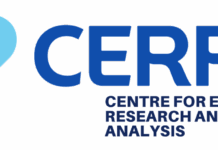By Stella BLANKSON
It is no secret that people work hard to acquire property and protect their assets. The saying ‘Increase assets and decrease liabilities’ holds in the wealth accumulation journey.
This adage explains why people value their possessions and want to secure them. Fortunately, insurance serves as a safety net, protecting us from unforeseen events that could disrupt our investments and provide a sense of security and reassurance.
Market Value vs Insured Value
When it comes to insurance, you will often encounter the terms’ insured value’ and ‘market value ‘. While both are about the monetary value of your property, their meanings and implications can be quite different.
As the saying goes, ‘It’s not a problem until there is a problem.’ Understanding these terms and when to apply them can make your insurance valuable, especially when making a claim.
Market Value
The term ‘market value’ means the amount one would reasonably pay for a property on the open market. This value changes with time and could either go up or down depending on the property’s nature and the economic situation. For instance, real estate’s market value generally appreciates while vehicles’ market value depreciates over time.
For a homeowner, for instance, the market value of a house is the price you would buy or sell your house on the real estate market, which includes the land. It is the price an insured asset in its present state could command from a willing buyer in a competitive market setting.
Market value is a big deal, especially when buying and selling houses (real estate). This value could change due to the house’s architectural design, location, demand and supply, age, condition and general economic factors. For example, property in areas where significant roads and interchanges have been constructed will likely increase its market value.
Property Valuers are professionals trained to determine property values. They are an unbiased and professional source for buyers and sellers valuing property. Though they are used primarily for valuing commercial properties, they can also be used to value domestic property, mainly when the property owner cannot quickly assess the value.
Insured Value
While the market value refers to how much the property will sell on the open market, the insured value may be more or less, depending on the property. When buying insurance, it is essential to confirm the value to be insured and the maximum amount insurance will pay you if a loss occurs.
It is not just the average cost of your asset/property but also the cost to fix or replace it if a loss occurs, such as an accident or a fire. The guiding question in determining the insured value is, “How much will it cost me to replace or restore the property to the state in which it was immediately before the loss occurred?” The adequacy of the insurance coverage will depend on how well this question is answered.
Just like the market value, insured value is not a fixed figure, as the dynamic nature of the market and replacement costs influence it. Therefore, it is crucial to regularly review and update the insured value to ensure adequate coverage.
These updates are necessary to avoid insufficient compensation in the event of a loss, making revision of the insured value a key responsibility for policyholders. Proactive insurance companies like Hollard Insurance often advise clients to review their insured values to reflect current market prices, at least during every renewal.
Where the insured value is less than what will be required to replace or fix the lost or damaged property, it is termed Underinsurance. On the flip side, where the insured value is more than what will be required to replace or fix the lost or damaged property, it is termed Overinsurance. In the event of underinsurance, the insured cannot claim the full loss, while in the event of overinsurance, insurers will only pay up to the market value and not the higher insured value.
The relevance of getting the values right is so crucial that there are specially trained firms and individuals whose profession is to value properties. They most often indicate the market value and insurable value.
Some suggest the reinstatement value, which is the cost to rebuild the property, and the forced sale value, which is the property’s value under duress or in a distressed sale situation. Understanding these different values can help property owners make informed decisions about their insurance coverage.
In conclusion, every individual or organisation must build wealth by acquiring properties. All such properties should be insured to secure their future. In insuring them, the owners must take appropriate steps to ensure that the values at which they are being insured are adequate so that, in the event of a claim, the insurance payout will be sufficient to restore the property to the state in which it was right before the loss.
Understanding the distinction between market and insured values is crucial for this exercise. While market value reflects what an asset could sell for in the current marketplace, insured value focuses on the cost to replace the asset in case of damage or loss.
Both values serve different purposes—one for transactional use, the other for protection against unforeseen risks. Policyholders can ensure adequate coverage and financial security by staying proactive in assessing and updating insured values and protecting their assets in a constantly changing market environment.
About the writer
Stella Blankson is a Senior Underwriter with the Global and Reinsurance Department at Hollard Insurance.










